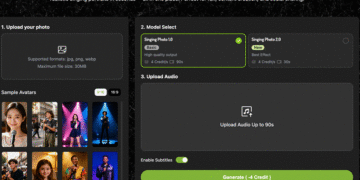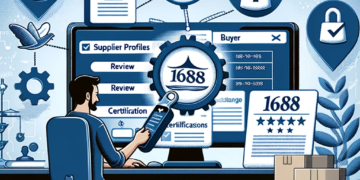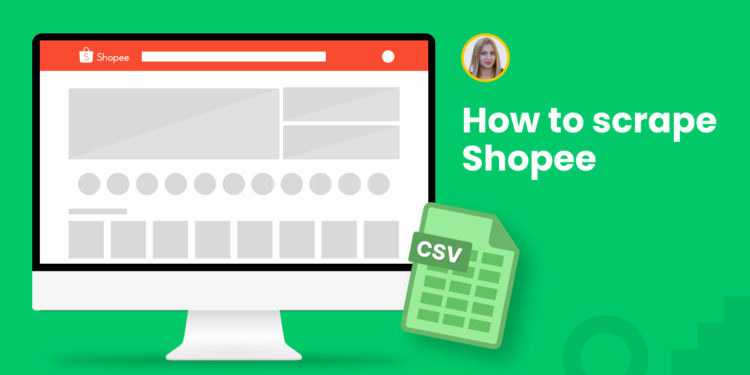Shopee is the largest eCommerce platform in Southeast Asia, expanding its services to Latin America, Europe, and East Asia. With over 300 million visitors monthly, Shopee has become a key player in the global eCommerce industry. Known for its mobile-centric, social-first approach, Shopee integrates payment and logistics support, making shopping secure and easy. Competing with major platforms like Aliexpress and Tokopedia, Shopee offers a wealth of data that can be incredibly beneficial for market research, competitor analysis, and price monitoring. In this guide, we’ll explore how to scrape Shopee data effectively, with a focus on using Shopee proxies to enhance your scraping process.
What is Shopee Scraper and How Does It Work?
A Shopee scraper allows users to extract data from Shopee by interacting with the platform’s unofficial API. Shopee’s API is used for its front-end interface, providing all the data displayed on the website, and even more detailed insights such as sales figures and stock levels. The Shopee scraper manages technical details such as setting HTTP headers, ensuring an efficient and straightforward way of retrieving data from Shopee.
The scraper performs several key actions, such as:
- Searching products by category (e.g., Men’s Wear > Pants)
- Retrieving detailed product information, including prices, descriptions, and ratings
- Fetching shop details for a particular store or seller
For advanced users, accessing Shopee’s unofficial API directly offers more control over data retrieval, allowing them to access extended features that aren’t available through the Shopee website.
What Data Can You Extract?
A Shopee scraper interacts seamlessly with Shopee’s unofficial API to retrieve a wide range of data, including:
- Product searches by keyword and category
- Detailed product information, such as price, stock levels, sales data, and product variants
- Buyer ratings with comments and media
- Hierarchical category trees
- Official shop listings, including performance metrics and product counts
- Keyword suggestions and autocompletion hints
One of the best strategies for acquiring comprehensive eCommerce data is to scrape both Shopee and Lazada simultaneously. By scraping these two platforms, you not only secure a more reliable data pipeline, but you can also leverage complementary insights, such as keyword trends from Lazada to enhance Shopee product searches.
Why Scrape Shopee Data?
Scraping Shopee data can unlock numerous advantages for eCommerce businesses. Here are some example use cases:
- Market and Competitive Analysis: Analyze sales data, product reviews, and competitor strategies to gain insights into market demand, emerging trends, and areas for strategic advantage.
- Opportunity Discovery: Uncover underserved keywords and niches in the market through aggregated product search results. This helps in discovering areas for new product development or market entry.
- Product Review Analysis: Use AI tools like ChatGPT to analyze product reviews in-depth, providing a clearer picture of consumer satisfaction, preferences, and potential areas for product improvement.
- Competitor Monitoring: Regularly scrape competitor data to monitor for critical changes, such as products going out of stock, pricing updates, or new product launches. This enables real-time alerts and allows businesses to react swiftly.
How to Scrape Shopee: A Step-by-Step Guide
Step 1: Prepare Requests
Start by formulating the API request URLs you want to scrape. Some useful URLs include:
- Search for products by keyword: https://shopee.sg/api/v4/search/search_items?keyword=tshirt
- List top categories: https://shopee.sg/api/v4/pages/get_category_tree
- List products by category: https://shopee.sg/api/v4/search/search_items?match_id=11027757
- Retrieve product details: https://shopee.sg/api/v4/pdp/get_pc?shop_id=414243778&item_id=23600133176
- Access product ratings: https://shopee.sg/api/v2/item/get_ratings?shopid=414243778&itemid=23600133176
Step 2: Use a Shopee Proxy for Efficient Scraping
When scraping large volumes of data from Shopee, it is crucial to avoid being blocked or throttled by the platform. This is where Shopee proxies come in handy. A Shopee proxy helps you mask your real IP address, allowing you to bypass IP bans and scrape data without detection.
By rotating IP addresses or using residential proxies for Shopee scraping, you ensure that your scraping operations remain undetected, even when you are extracting significant amounts of data. Shopee proxies are especially helpful when scraping data from multiple regions, as they allow you to access localized information without encountering restrictions.
Step 3: Execute the Scraping Tasks
Once you’ve prepared your API request URLs and set up your proxy, it’s time to execute the scraping task. Depending on your tool, you may be able to scrape data either on your local device or in the cloud (for premium users). Once the data is scraped, you can export it in formats like Excel or directly save it to your database for further analysis.
Step 4: Monitor Results and Adjust
After executing your scraping tasks, it’s essential to monitor the results. Ensure that your data is accurate and that your scraper isn’t being blocked. Using Shopee proxies helps keep this process smooth, but you should also review the data periodically to ensure that you are getting the most relevant and up-to-date information.
Conclusion
Scraping Shopee data can significantly enhance your eCommerce strategy, whether you’re conducting market research, tracking competitors, or analyzing customer feedback. With the help of Shopee proxies, you can bypass restrictions and scrape data efficiently, even at large scales. By following this step-by-step guide, you’ll be able to unlock valuable insights from Shopee and apply them to your business. Whether you’re looking for product information, pricing data, or competitor strategies, scraping Shopee with Shopee proxies is a powerful tool for gaining a competitive edge.











































































